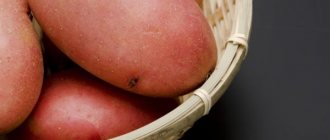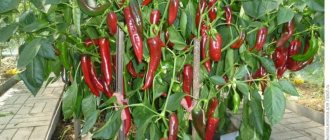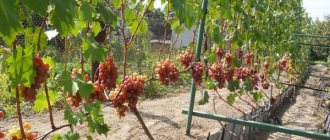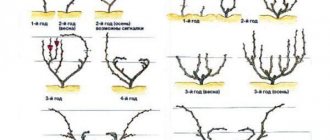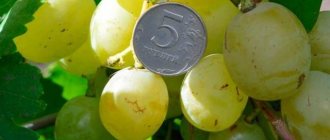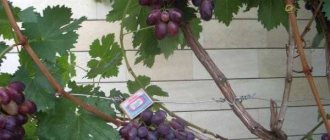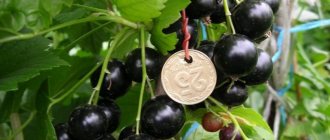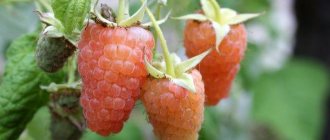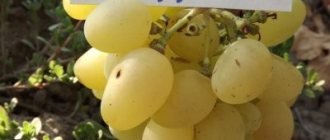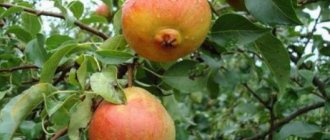History of selection
The blackberry variety Lochtay was obtained by cross-pollinating Loch Ness and SCRI 82417D. The originator is the Scottish Crop Research Institute. There is no data on the specific date of receipt of the varietal unit. Currently, the hybrid is widespread in Europe, the post-Soviet space and in the UK - as an industrial one.
Origin of the variety
The Loch Tay blackberry was obtained by Scottish breeders through the cross-pollination of Logan berries and raspberries. Blackberries of this variety were brought to Russia in 2011 and very soon won the love of gardeners, because they combine so many advantages.
This wonderful blackberry variety can be grown in any region. It tolerates climatic difficulties well - droughts and frosts. In Europe, Loch Tay blackberries are cultivated on an industrial scale. In Russia it is grown in the Moscow region, Leningrad region, North Caucasus and Siberia.
Botanical description
Description of external culture data:
- semi-creeping bushes, 4–5 m high;
- shoot smooth, thornless, light brown;
- approximately from the middle the branches begin to curl;
- foliage is carved, leathery, emerald green;
- shoots appear only when the root system is damaged;
- inflorescences consist of 10–12 milky flowers;
- the fruits are large, weighing 5–12 g;
- The berry is black, shiny, with a dense structure.
Did you know? Blackberries quench thirst and also help reduce fever during colds.
Blackberries of different ripening periods
The ripening period is especially important in regions that do not have an ideal climate for gardening.
Early
Early ripening blackberries in the southern regions of Russia ripen at the end of June, in temperate climates - in July. The fruiting period stretches for a month and a half or even more. Disadvantage - low frost resistance (about -15°C):
- Natchez. The shoots are semi-erect, thornless, up to 2–3 m high. The berries weigh 8–10 g. The seeds are small, the taste is dessert, the pulp is very aromatic. Productivity - up to 18 kg. Blackberries are characterized by good keeping quality and transportability.
- Columbia Star. The shoots are creeping, up to 5 m long, without thorns. Berries weighing up to 15 g. Productivity (according to the manufacturer) – up to 20 kg. The variety tolerates heat and drought well.
- Osage. The bushes are erect, shoots without thorns, up to 2 m high. The yield is only 3–4 kg, but this is compensated by the excellent taste of the berries.
Video: description of the Natchez blackberry variety
Mid-season varieties
Blackberries bear fruit in July and August. The taste and quality of the berries greatly depend on the weather in summer. If there is a lack of heat, they turn out sour; if there is a lack of moisture, they dry out:
- Loch Ness. The bushes are semi-creeping and thornless. The variety is distinguished by its unpretentiousness, keeping quality and transportability. The minimum yield is about 15 kg, with proper care - up to 25–30 kg. Berries weighing 5–10 g, with a slight tartness in taste.
- Loch Tay. The shoots are creeping, up to 5 m long, without thorns. The berries are very sweet, large (up to 15 g). The thick skin protects them during transportation. Productivity is average - up to 12 kg. The variety is characterized by good immunity, but not frost resistance (down to -20°C).
- Waldo (Waldo). The bush is climbing, without thorns. The berries weigh about 8 g, the taste is sweet and sour, balanced. Productivity - up to 17 kg. Frost resistance is average.
Video: what Loch Tay blackberries look like
Late blackberry
A significant advantage of such varieties is their unpretentiousness. But in the Russian climate, you simply won’t be able to wait for the harvest:
- Texas. The shoots are vigorous, prickly, creeping, up to 5 m long. The berries are lilac-crimson, with a bluish-silver coating. Average weight is 5–7 g, total yield is up to 13 kg. The variety is very reminiscent of raspberries both in the appearance of the leaves and in taste. Frost resistance down to -15°C.
- Chester. Shoots are semi-creeping, up to 3.5 m in length, without thorns. The berries weigh 5–8 g, are very sweet, with dense pulp, the yield is up to 20 kg. The variety is considered frost-resistant (down to -25–30°C), but is demanding on the quality of the substrate and lighting.
- Triple Crown. The bush is semi-climbing, shoots up to 3 m in length, thornless. The berries weigh 8–10 g, the yield is up to 10 kg. Characteristic high heat and drought resistance.
Characteristic
The ultra-early hybrid is distinguished by its advantageous characteristics, thanks to which it has gained its popularity among farmers from different countries. Its main advantage is its good resistance to various diseases and pests.
Drought resistance, frost resistance
The plant tolerates drought well. It develops well and bears fruit even at +40°C. With regard to cold, its resistance is at an average level: the bushes survive the winter period well at temperatures not lower than –20°C. Taking this into account, vegetation should be covered during the winter.
Landing Features
The crop in question is unpretentious, but to get a good, tasty harvest, you need:
- select and prepare the site correctly;
- buy good planting material and also carry out preparatory work with it;
- decide on the planting date, taking into account the climate of your region.
Did you know? Blackberry bushes are excellent honey plants. Honey collected from this vegetation has a liquid structure, does not crystallize and is transparent.
Deadlines
It is better to plant the described crop in the spring - this way, next year you will have the opportunity to enjoy the first berries.
Selecting a location
The area for planting should be selected taking into account humidity and lighting. Blackberries have roots that go much deeper into the soil than raspberries, their closest relative, so you need to take into account the level of groundwater - it must be at least 2 m. In order for the berries to ripen well, the vegetation needs good lighting. The southern, southwestern or southeastern side of the site is ideal. From the north, plantings should be protected from cold winds.
A good option is to plant blackberries at a distance of 3 m from buildings or fences on the south side.
In terms of soil quality, the vegetation is completely undemanding. However, the best results in terms of yield levels are observed in well-aerated areas fertilized with organic matter, so special attention should be paid to preparing the soil for planting. Another nuance is compliance with crop rotation. Blackberries cannot be planted after nightshade crops and strawberries. The best precursors for it are grains and legumes. Preparations on the site begin in the fall.
The area is thoroughly cleaned of plant debris, dug up to a depth of 40 cm. Then disinfection is carried out using 3% copper sulfate concentrate. The solution consumption per 10 m² is 1 liter. About a week later, they dig again to a depth of 20 cm, adding 20 kg of manure, 10 kg of sand, 120 g of superphosphate and 60 g of potassium salts into the soil for each m².
Technology and features of landing
Although blackberries are considered an unpretentious plant, in order for them to delight you with berries, you need to follow agricultural practices, find a suitable plot for the garden bed, and place the plants on it correctly.
See also
Description and characteristics of blackberries of the Triple Crown variety, propagation, planting and careRead
Choosing a healthy and strong seedling
For blackberries, it is better to go to a special nursery to purchase Loch Tay and not another variety. You need to buy an annual bush no higher than 40 cm; its shoots should have light brown skin without cracks.
Choosing a landing site
Blackberries take root well and bear fruit on neutral soils and soils with low acidity, where chamomile, field chamomile, and bindweed grow. The site for the Loch Tay hybrid should be allocated on the sunny side.
Preparing the soil and holes
Having chosen a place for blackberries, 2 weeks before planting you need to dig holes no more than 40 cm deep every 2 meters. Pour half a bucket of humus into them, mix it with ash, and water the holes with water.
Scheme and technique of planting plants
After 10-14 days, the blackberry roots are straightened and placed in the ground. The growth bud of the bush is deepened into the ground by 30 mm, the soil is compacted and mulched with peat. There should be at least 2.5 meters between the beds.
Rules of care
Caring for plantings involves the following activities:
- watering;
- loosening and mulching the soil;
- fertilization;
- pruning;
- garter.
If the plantings occupy a large area, it is advisable to organize a drip irrigation system on the site. When growing a small number of bushes, you can water the vegetation at the root. In both cases, each specimen should receive from 5 to 15 liters of water at a time, depending on weather conditions. The frequency of watering is once every 2–3 weeks.
Important! It is better to combine fertilizing with watering: for example, apply water under the bushes in the morning, and fertilizer in the evening.
After each moistening of the soil artificially or rain, the soil must be thoroughly loosened, then a layer of mulch 5 cm high must be laid. Compost or peat mixed 1:1 with sawdust can be used as mulch.
Fertilizing begins a year after planting. In the spring, before the buds swell, nitrogen-containing fertilizers are used - you can use nitrophoska or manure. Using the first option, add 80–100 g of the substance per 10 liters of water, the second - 1 liter of mullein per 10 liters of water. A bucket of the prepared mixture is enough to feed one bush. At the stage of fruit formation, you can use wood ash - for each m², 300 g are embedded to a depth of 5 cm in moist soil.
In the fall (in mid-September - for northern and temperate latitudes, in mid-October - for southern latitudes), 100 g of superphosphate and 60 g of potassium salt are applied to each m². A year after spring planting, pruning is carried out. New shoots are pinched at a height of 90 cm. To get a good harvest, you need to leave 4 powerful new shoots every year for 5 years, and remove the rest. So, by the age of five, the bush should consist of 20 increments of various ages - from 1 to 5 years.
With each pruning, excess branches that thicken the plantings, as well as shoots that no longer bear fruit, are completely removed. Such manipulations can be carried out before the buds open or during preparation for winter. It is usually practiced to grow the variety in question on trellises. This eliminates the risk of branches coming into contact with the soil, which has a beneficial effect on the immunity of vegetation and greatly facilitates harvesting.
Along the entire length of the row, in the immediate vicinity of each plant, wooden supports 2.5 m high are installed. Several rows of rope are stretched between them. The first row is organized at a height of 20 cm from the soil. All others are placed in increments of 30 cm. In total, there are 5 rows of rope for gartering shoots of different ages (as shown in the picture below).
Reviews from gardeners
The Lokhtei variety has received a positive assessment among many gardeners. Blackberries are planted regardless of region throughout the country.
Here is what Valentina says about the Lokhtei variety: “I have been growing only this variety of blackberries for the fifth year in a row, the yield is 10-12 kilograms per bush. The bushes reproduce well: new shoots are constantly appearing. The berry turns out tasty, sweet, but not too cloying. You can add less sugar when making jam; blackberries have plenty of it.”
Victor says: “Lokhtei planted blackberries for the first time 5 years ago. Since then, the number of bushes has doubled, as has the harvest. It makes an excellent berry; my grandchildren love it. The purpose is universal; you can freeze blackberries or grind them with sugar. I will definitely continue breeding, as our whole family really loved this variety.”
Harvesting and storage
Considering the extended period of fruit yield, it is better to collect them as they ripen - every 3-4 days. Immediately upon picking, the berries are sorted into small plastic containers lined with paper, laying them out in one layer. Store fruits at a temperature of 0°C and a relative humidity of 70%. Under such conditions, the products remain fresh for 5–7 days without losing weight.
Did you know? Blackberries can be used as a natural fabric dye to produce purple or blue shades.
Blackberry Himalayas: variety description
Blackberries are a close relative of raspberries, but differ in the taste and color of the berries. To get a good blackberry harvest, you need to choose the right variety for the strip in which it will grow.
Recently, this culture has attracted increasing interest. Having a wide variety of varieties, however, each of them differs in some features in care and cultivation.
Blackberry berries, leaves and flowers can be used for medicinal purposes. They contain tannins and volatile antibiotics, which act as an antiseptic on the upper respiratory tract.
Himalaya blackberry is a shrub with a perennial rhizome. The shoots are pentagonal in shape, and the leaves have 3-5 leaflets. The flowers are large, bisexual, self-pollinating. Depending on how the stems grow, blackberries belong to the group of subshrubs with drooping stems that have thorns 1 centimeter long.
The flowering period of the Himalaya blackberry variety is quite long - from early May to August. The variety is early, but the harvest is harvested in several stages, as the ripening of the berries is extended. The berries are large, sweet, juicy, black or black-red in color when ripe, and have a very pleasant taste.
Preparing for winter
When cultivating in southern regions with a mild climate, there is no need to cover the plantings for the winter . If the crop is cultivated in temperate and northern latitudes, the bushes must be removed from the trellises, about 2 weeks before the onset of cold weather. The branches are bent to the soil and pinned with metal staples, then covered with spruce branches or agrofibre, sprinkled with a layer of soil 10 cm high on top. After the snow melts, in the spring, the cover is removed and the branches are again placed on the trellis.
Features of growing Kiowa blackberries
Planting a bush is carried out traditionally for different varieties of blackberries, but taking into account the characteristics of a particular variety.
Dates and place
The Kiowa variety is suitable for spring and autumn planting. In the spring, the bush is planted before the sap begins to flow, in the fall - a month before the first frost. Choose a place that is bright, protected from drafts and cold winds.
Soil preparation
Blackberry bushes grow well in fertile, loose soil enriched with nutrients. On heavy soils, peat and sand should be added. On acidic soils, apply liming.
Selection and preparation of seedlings
A healthy seedling should be different:
- well-developed root system (at least 10 cm);
- the presence of a growth bud;
- 1-2 leafy shoots.
The seedling is checked for infections. With a closed root system, they focus on the condition of the above-ground part.
Algorithm and landing scheme
Blackberry bushes of the Kiova variety are planted 1.5 m apart from each other. Landing sequence:
- drainage is created at the bottom of the planting hole;
- a layer of fertile soil is poured on top as a mound;
- the root system of the seedling is placed on it;
- cover up to the root collar with a layer of nutritious soil;
- water and mulch the tree trunk circle.
The root collar is not buried; it is located above the ground. Shoots are cut to 30-40 cm.
Reproduction methods
The crop is propagated by digging in the tops or deliberately damaging the root system with a shovel so that the bush produces basal shoots. In the first case, in early July, several one-year-old branches are selected, bent to the soil, the tops are pinned and sprinkled with 10 cm of soil. Throughout the season, standard care is provided as for an adult plant.
In the spring of next year, the resulting seedling is disconnected from the parent plant, dug up and transplanted into a previously prepared place. In the second case, well-developed root shoots are selected, dug up and rooted in the right place.
Find out in more detail what blackberries on your site get along with and what they don’t.
Advantages and disadvantages of Loch Tay
The main advantage of Loch Tay is its branched and well-developed root system. Healthy, evenly developed roots ensure good adaptability, survival and high yield of blackberries. The absence of thorns on the shoots makes caring for the plant and harvesting much easier.
The high commercial and consumer qualities of blackberries allow them to successfully compete with American and European breeding varieties. The berries are large, dense, juicy, and tolerate transportation well.
Failure to follow agrotechnical recommendations, irregular pruning of old shoots, or improper formation of the bush may result in uncontrolled spread of blackberry shoots throughout the area.
In dry years, when hot weather (over +30 °C) persists for a long time during the formation and ripening of blackberries, the berries may dry out slightly. In winters with little snow and frost, the shoots of Loch Tay may freeze.
Diseases and pests
If not properly cared for, the crop in question may become infected:
- botrytis - when the first signs of the disease appear, all affected parts of the vegetation should be removed, sprayed with a solution of potassium nitrate on the leaves and soil (25 g of substance per 10 liters of water), consumption - 1 l/m²; [img hint=Botrytis on blackberries id: 102624 [/img]
- anthracnose - dust the leaves and soil with wood ash, loosen the soil in the rows and next to the bushes, mulch with a mixture of peat, manure and dry soil (3:1:1);
- verticillium - remove infected parts, fumigate plants with tobacco or sulfur.
Among the pests that can settle on blackberry bushes are raspberry beetles and aphids. If these parasites appear, you can use the drug “Iskra” - it must be diluted according to the instructions. The working fluid consumption per m² is 1.5 liters.
The basis of prevention will be the correct agricultural technology for cultivating vegetation. In addition, in the period before leaving for the winter and before the buds swell, it is necessary to spray the shoots and soil with a 3% concentrate of copper sulfate or Bordeaux mixture. This approach will not only help protect plantings from infection by diseases and pests, but will also play the role of additional foliar fertilizer.
If humidity is high throughout the season, be sure to periodically dust the plants themselves and the soil around them with wood ash.
Loch Tay is an industrial large-fruited blackberry hybrid that is quite popular. It adapts perfectly to a wide variety of climate conditions and is undemanding in terms of soil composition. Even beginners in gardening can easily cope with its cultivation.
Results
Summarizing the reviews of gardeners, we can conclude the following undeniable advantages of Loch Tay blackberries:
- Early fruit ripening (June-July).
- High yield (about 20 kg per bush).
- The absence of thorns on the branches makes harvesting much easier.
- Frost resistance (up to -20 degrees below zero).
- Drought resistance (up to +40 degrees Celsius).
- Excellent taste and presentation of berries.
- Transportability and storage ability.
- High immunity to diseases and pests.
- Possibility of growing on an industrial scale and mechanized berry picking.
With all this, there are minor disadvantages of this variety:
- Strong growth throughout the area, the need for frequent pruning and mulching.
- The need for winter shelter when growing in northern regions.
The perennial from the Rose family is cultivated in Europe and grown on an industrial scale in the USA and Canada. In a relatively short time, dozens of blackberry varieties were created - erect and climbing, with and without thorns. The berries of the subshrub are rich in antioxidants and vitamins; they have a surprising combination of acid and sweetness. Scientists managed to embody the best technical characteristics and taste qualities in Loch Tay blackberries. It bears fruit in southern latitudes, produces high yields in harsh climates, and grows in large areas and in summer cottages.
